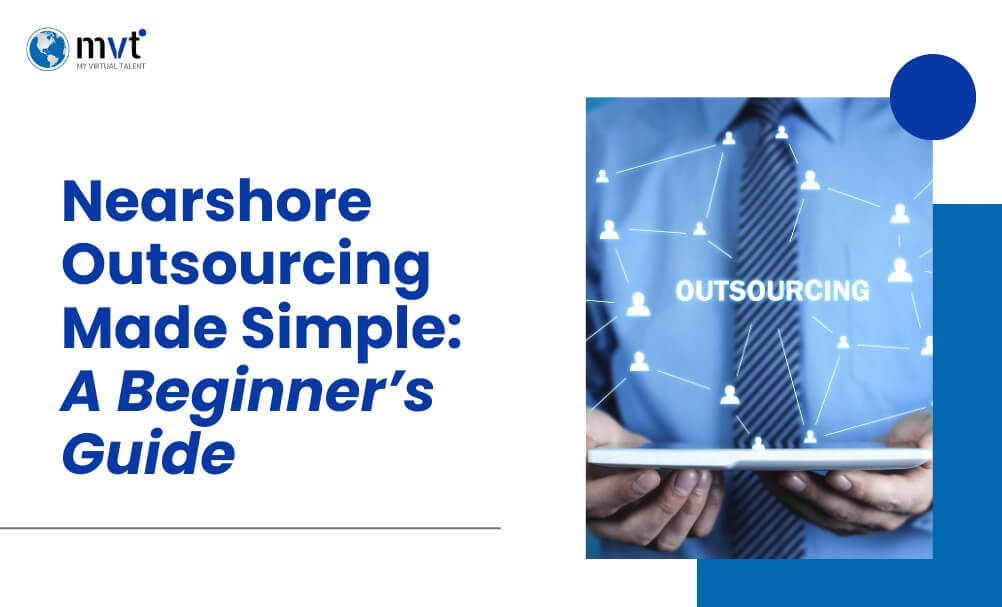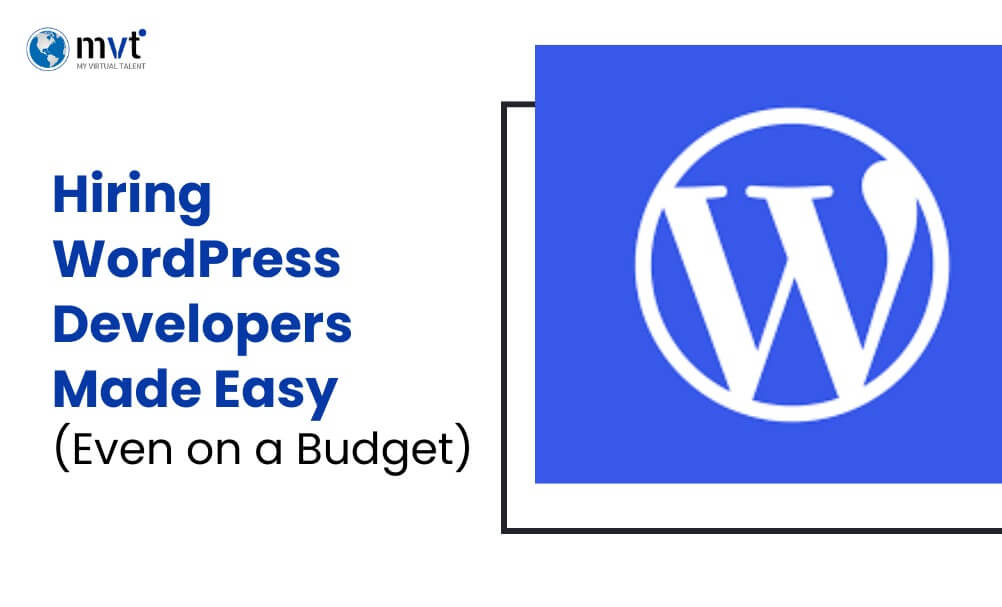
78% of businesses that tried Nearshore Outsourcing reported better results compared to traditional offshore outsourcing. This is not just a statistic; it shows how companies today are changing the way they work with global teams.
Many businesses are now moving away from faraway offshore locations and choosing nearby countries instead. The reason is simple. Nearshore Outsourcing gives a balance between saving money and getting high-quality work. It reduces many of the common problems that come with offshore setups.
Working across long time zones, facing cultural differences, and struggling with poor communication can make offshore projects stressful. Nearshore options solve these challenges by offering closer time zones, better communication, and smoother collaboration, while still keeping costs lower than hiring locally.
This guide will make Nearshore Outsourcing easy to understand. You’ll learn its main benefits, see real-life examples, and get clear steps to start. Whether you’re a new startup or a growing company, nearshore partnerships can help you save time, improve results, and scale with confidence.
What is Nearshore Outsourcing?
Nearshore Outsourcing means working with service providers in nearby countries, usually within the same or similar time zones. Unlike offshore outsourcing, which can involve teams on completely different continents, nearshore partnerships reduce the distance and make collaboration smoother.
To see the difference, let’s compare the three main outsourcing models.
Onshore outsourcing happens in your own country. It offers the easiest cultural and legal alignment but provides very little cost savings.
Offshore outsourcing involves faraway countries, often across continents. While this usually brings the lowest costs, it can create problems with large time zone gaps, language issues, and cultural differences.
Nearshore outsourcing sits right in the middle. It delivers strong cost savings while keeping time zone differences small and maintaining closer cultural understanding.
Examples make this clearer. Many US companies work with teams in Mexico, Costa Rica, or Canada. In Europe, businesses often partner with providers in Poland, Ukraine, or Romania. These choices bring both efficiency and savings, making Nearshore Outsourcing an attractive option for companies that want balance.
The Key Benefits of Nearshore Outsourcing
Cost Efficiency Without Quality Compromise
One of the strongest reasons companies choose Nearshore Outsourcing is cost. On average, it can be 30–50% less expensive than hiring a local team in your own country. At the same time, it often maintains better quality standards than traditional offshore options. This balance makes it very appealing for businesses that want both savings and reliable results.
For example, imagine a software development project. With a domestic team, the cost may be around $150,000. The same project with a nearshore partner may price from $75,000 to $105,000. It means huge savings while keeping the work at a high level. Offshore teams may offer even lower rates, around $45,000 to $60,000, but the risk of extra supervision, quality checks, and delays often raises the final cost.
Time Zone Alignment
One of the biggest benefits of Nearshore Outsourcing is working in time zones that are only 1–3 hours apart from your own. This small difference makes collaboration much easier and smoother. Your teams can join real-time meetings without staying up late or waking up very early. Urgent requests get answered quickly, and daily workflow feels natural for everyone.
This close alignment has a direct impact on productivity. Businesses that use Nearshore Outsourcing even report finishing projects up to 40% faster compared to offshore setups. Tasks move forward without delays caused by waiting hours for a reply. Meeting schedules may even become easier to manage, which helps teams stay connected and focused.
When teams share same working hours, communication is quick, response times are better, and projects keep their momentum. This makes Nearshore Outsourcing an effective solution for companies that value speed, quality, and collaboration.
Cultural and Language Compatibility
One of the biggest advantages of Nearshore Outsourcing is cultural and communication compatibility. When you work with teams in nearby countries, you often share similar values, work habits, and business practices. This makes it much easier to collaborate and reduces the risk of miscommunication.
Language proficiency also plays a big role. Nearshore partners usually have strong English skills and are familiar with international business terms. This helps keep project discussions clear and avoids confusion that can slow down progress.
But the benefits go beyond just language. Nearshore teams often understand your business context better, share similar meeting styles, and follow work ethics that match your own company culture. This alignment creates smoother integration and stronger teamwork.
The result is fewer misunderstandings, clearer project requirements, and partnerships that last longer. With Nearshore Outsourcing, collaboration feels natural, which makes projects run more effectively from start to finish.
Common Nearshore Outsourcing Services
Nearshore Outsourcing is widely used in many industries, but software development and IT services lead the way. Businesses often outsource web development, mobile app creation, ongoing software maintenance, and IT support to nearshore teams.
Customer support and call centers are also strong areas. With shared language skills, cultural understanding, and similar time zones, nearshore partners provide smooth and reliable customer experiences.
Digital marketing and content creation thrive in nearshore setups as well. Marketing teams can easily collaborate in real-time, ensuring campaigns are on-brand and delivered on time.
Financial and accounting services also benefit. Cost savings combined with regulatory knowledge and easy communication make nearshore partnerships very effective in this area.
Case Study: A tech company in Austin, Texas, partnered with a software team in Guadalajara, Mexico, for a mobile app project. The nearshore team finished two weeks early and 25% under budget. The one-hour time zone difference allowed daily stand-ups and instant issue resolution.
How to Get Started with Nearshore Outsourcing
Before moving forward with Nearshore Outsourcing, take time to carefully evaluate your business needs. Not every task is a good fit for outsourcing, so it’s important to decide which processes can be handled externally and which should remain in-house.
You can use a simple checklist to guide your evaluation:
- Process complexity: Can the task be clearly explained and documented? If yes, it may be suitable for outsourcing.
- Communication requirements: Does the task need constant, real-time collaboration, or can it be managed with scheduled updates?
- Security considerations: Will sensitive data be shared? Make sure strict protection measures are in place.
- Cost analysis: After factoring in management and oversight, will outsourcing still deliver real savings?
- Timeline flexibility: Can project deadlines allow for a short adjustment period as the new team gets up to speed?
This step ensures your Nearshore Outsourcing plan matches your company’s goals.
Choose the Right Nearshore Partner
Selecting the right partner is the key to success with Nearshore Outsourcing. The wrong choice can cause delays, poor quality, and frustration, while the right partner can deliver strong results and smooth collaboration.
Start by checking technical expertise. Their skills should match or even exceed what your team can do. Ask for portfolios, client references, and certifications.
Evaluate communication skills carefully. It’s not only about language but also responsiveness, clarity, and cultural understanding during your first discussions.
Make sure their security protocols meet your industry needs. Ask about compliance, data protection, and confidentiality systems.
Don’t ignore cultural fit. Shared values and similar work practices often determine long-term success.
Important questions to ask include: How do they handle scope changes? What tools do they use for communication? Can they provide references? How do they ensure data security?
Finally, avoid red flags like unrealistic pricing, poor communication, or refusal to share references.
Establish Clear Communication Protocols
Clear communication is the foundation of every successful Nearshore Outsourcing partnership. By setting expectations early, you can avoid most problems. Agree on how often you will check in, which communication channels to use, and how urgent issues will be escalated.
Recommended tools make this easier. For daily chats, Slack or Microsoft Teams work well. For regular video meetings, Zoom or Google Meet are excellent choices. To keep projects on track, use tools like Asana, Trello, or Monday.com to assign tasks, monitor progress, and collaborate in real time.
Strong relationships also require effort beyond tools. Schedule regular video calls to keep personal connections strong. Celebrate project milestones together, even virtually, and allow some space for informal conversations. These small actions help build trust and make teams feel like they are working as one unit. With strong communication, Nearshore Outsourcing becomes smoother and far more effective.
Potential Challenges and How to Overcome Them
While Nearshore Outsourcing offers many benefits, it also comes with challenges. The good news is that most of these can be solved with the right approach.
Data security is one of the biggest concerns. To address this, carefully vet your partner, use strong contracts, and request regular security audits. Always confirm that they meet industry standards and hold the right certifications.
Quality control issues can be prevented with clear project requirements, milestone-based approvals, and regular reviews. Open feedback channels help identify and fix problems quickly.
Team integration can also be a challenge. Include nearshore members in key meetings, share your company culture, and encourage cross-team collaboration to build unity.
For smooth oversight, set success metrics, review progress often, keep direct communication with important team members, and document all key decisions. With these steps, Nearshore Outsourcing projects run more effectively and deliver better results.
Take Your First Step Toward Nearshore Success
Nearshore Outsourcing gives businesses the perfect mix of cost savings, smooth collaboration, and high-quality results. The 78% success rate mentioned earlier is no surprise; it comes from the clear benefits of working with nearby teams who share similar culture, business values, and time zones.
To succeed, start small. A pilot project is a smart first step. It allows you to test communication styles, check quality standards, and see how well the relationship works before handing over your most important tasks. This way, you can build trust and confidence at a steady pace.
Your journey into Nearshore Outsourcing doesn’t require perfect timing. Many successful companies simply started with one project and quickly discovered the competitive edge it brings. Ready to explore the benefits of nearshore partnerships? Consult MyVirtualTalent today and let our experts guide you toward faster growth, stronger collaboration, and smarter business operations.
Looking for fresh content?
Get articles and insights from our weekly newsletter.
Recent Posts
Reduce Your Marketing Spend By 70% And Grow Your Revenue Organically 10X Faster!
Get a Free Quote Today!









